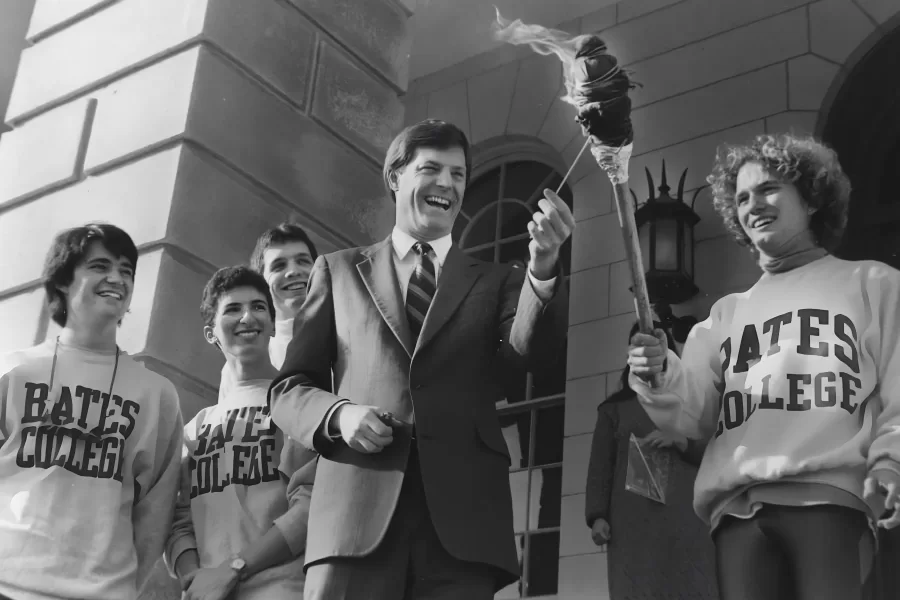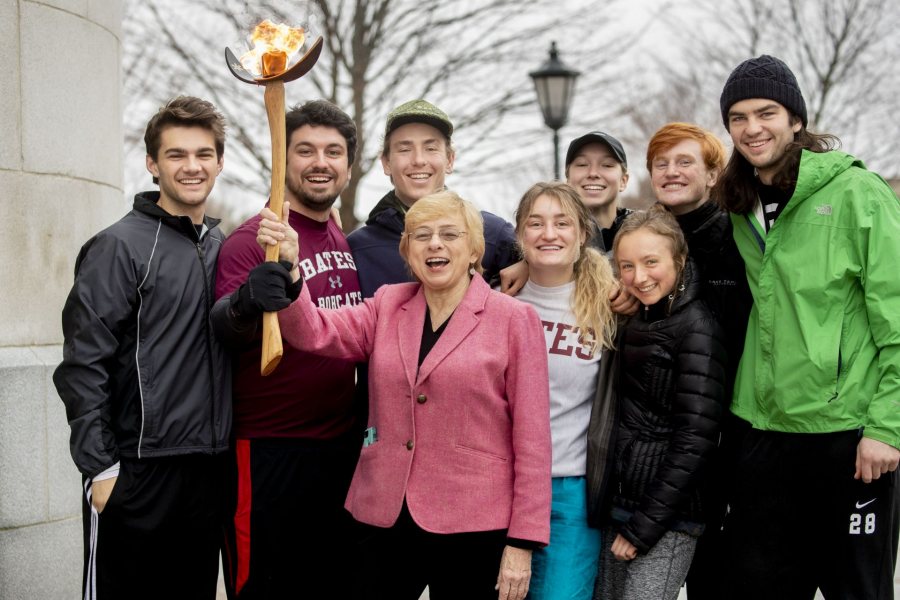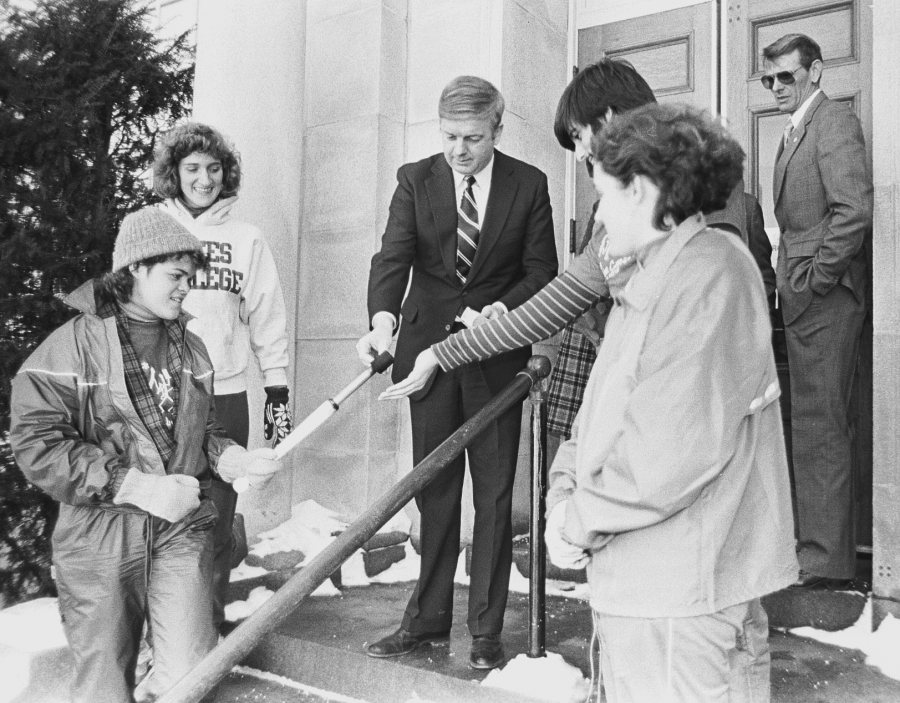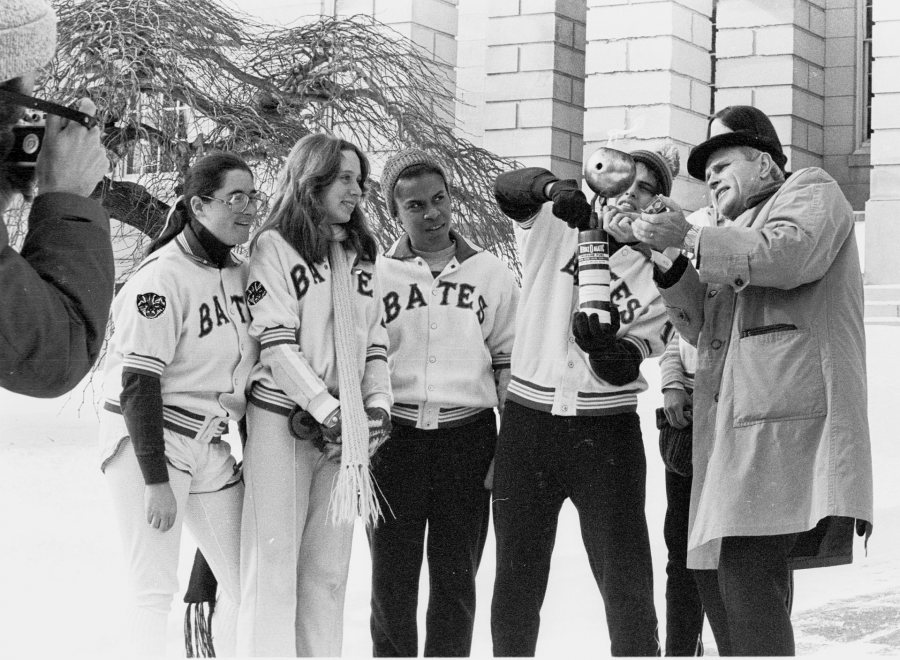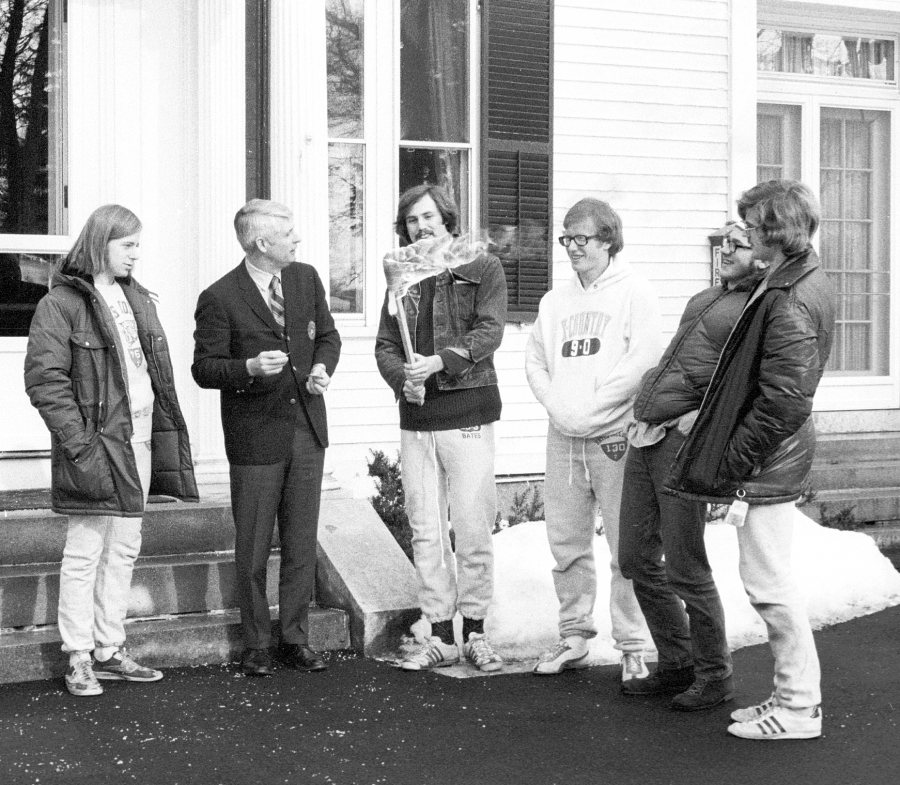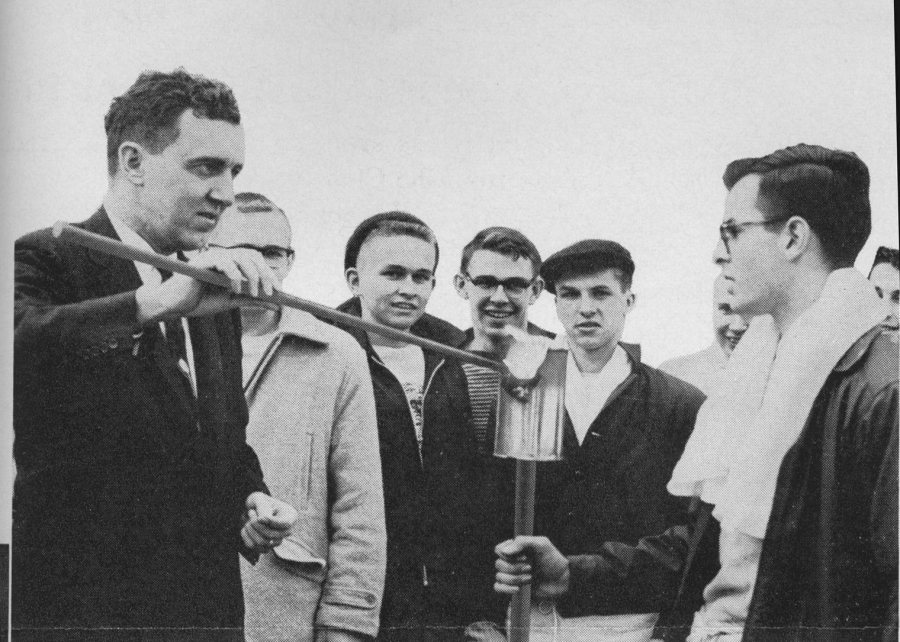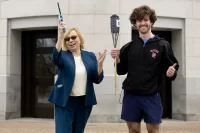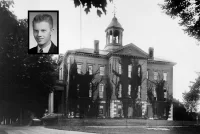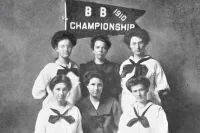
Founded by the Bates Outing Club 104 years ago, the Bates Winter Carnival debuted with the promise to provide “the opportunity for some healthful outdoor enjoyment,” said The Bates Student on the eve of the first carnival in February 1920, adding, “So get out of doors with the bunch.”
One hundred and four years later, the venerable Bates carnival is now upon us — a good time to share some of our favorite moments of Bates winter outdoor enjoyment, plus one sinking moment at Lake Andrews.
Paul Bunyan, 1962
Easily the most famous Bates snow sculpture was the 30-foot Paul Bunyan erected by the Outing Club for the 1962 Winter Carnival.
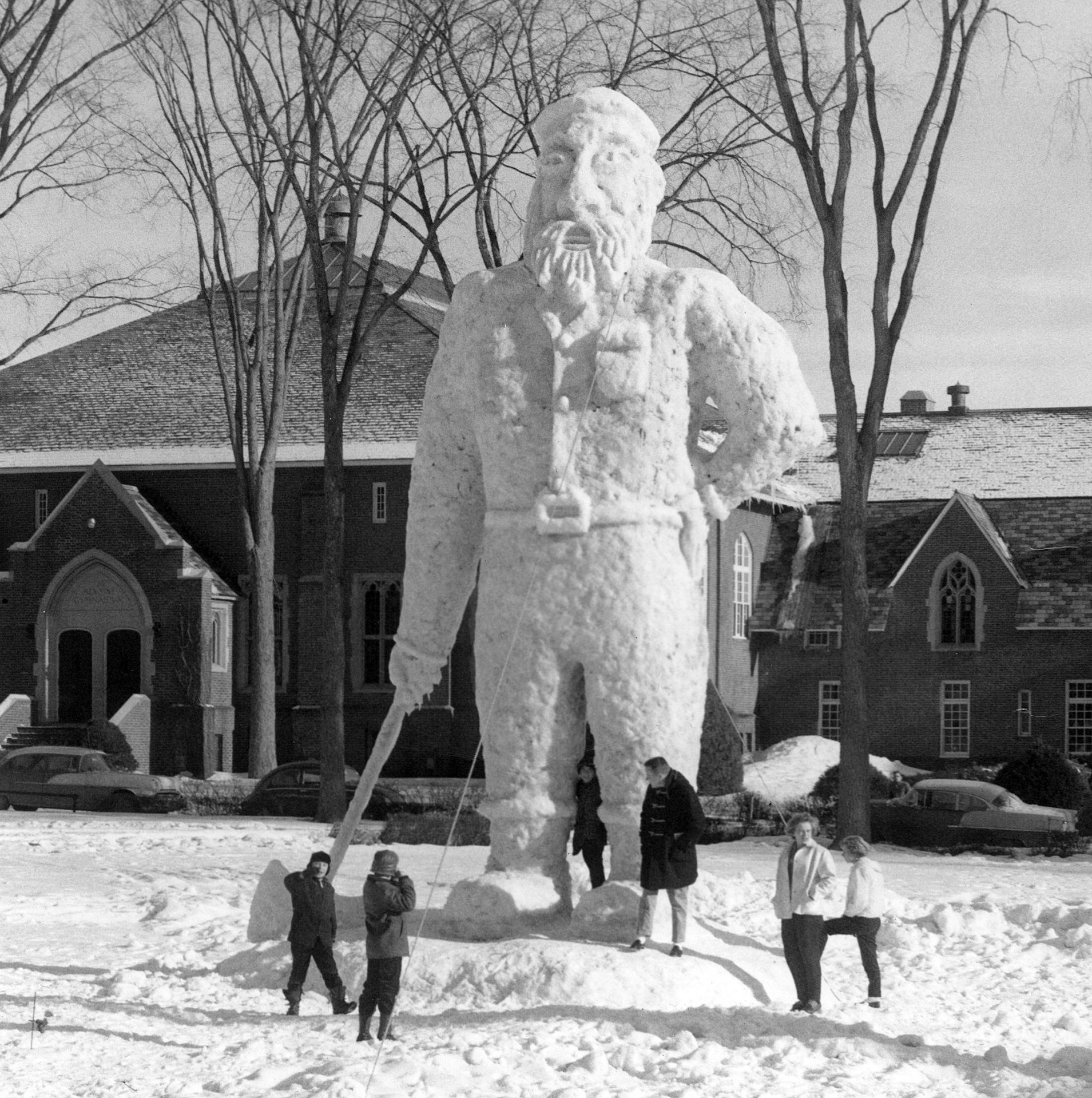
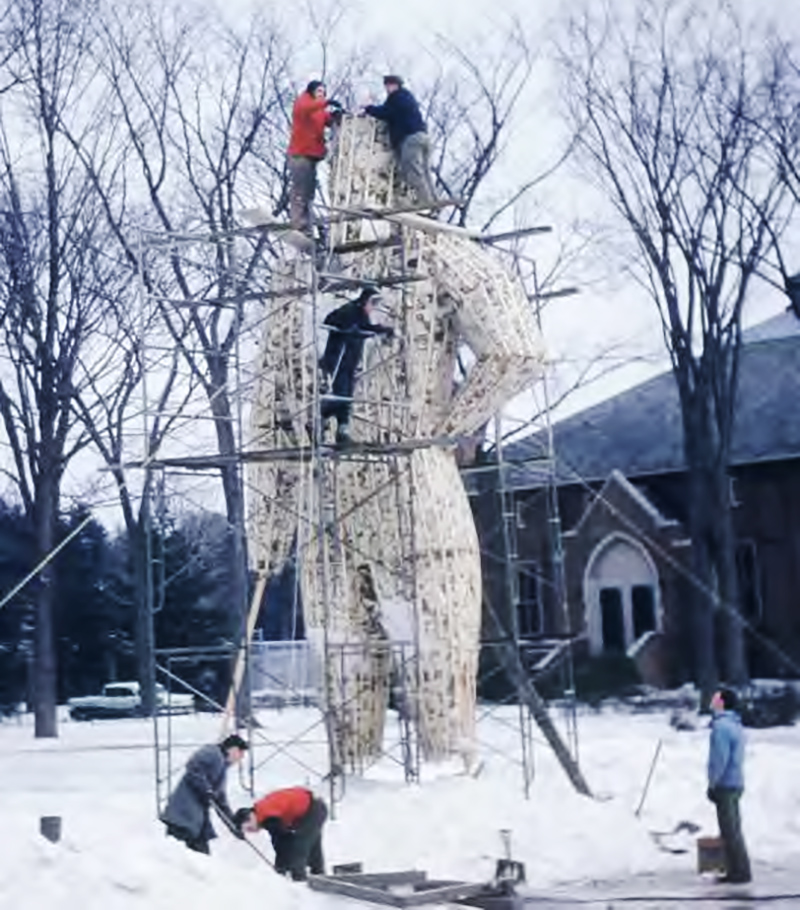
The project was engineered by Outing Club member Douglas Smith ’63, whose summer work in a boatyard and high school experience as a theater stage manager imparted skills to design and build the sculpture’s wood frame, which he covered in chicken wire.
He transported the frame to Bates “tied to the roof of my ’47 Buick,” as he recalled years later.
Erected outside Alumni Gym (with help from the college maintenance staff, which loaned scaffolding), the framework was stuffed with crumpled newspapers to provide a backing for the layer of snow, applied by a large crew of students.
Once erected, it was illuminated at night by spotlights for the duration of the Carnival.
Bobcat crossing, 2009
A few Bates friends drove to rural Gilead, Maine, one winter day in 2009 to create a road-gap jump.
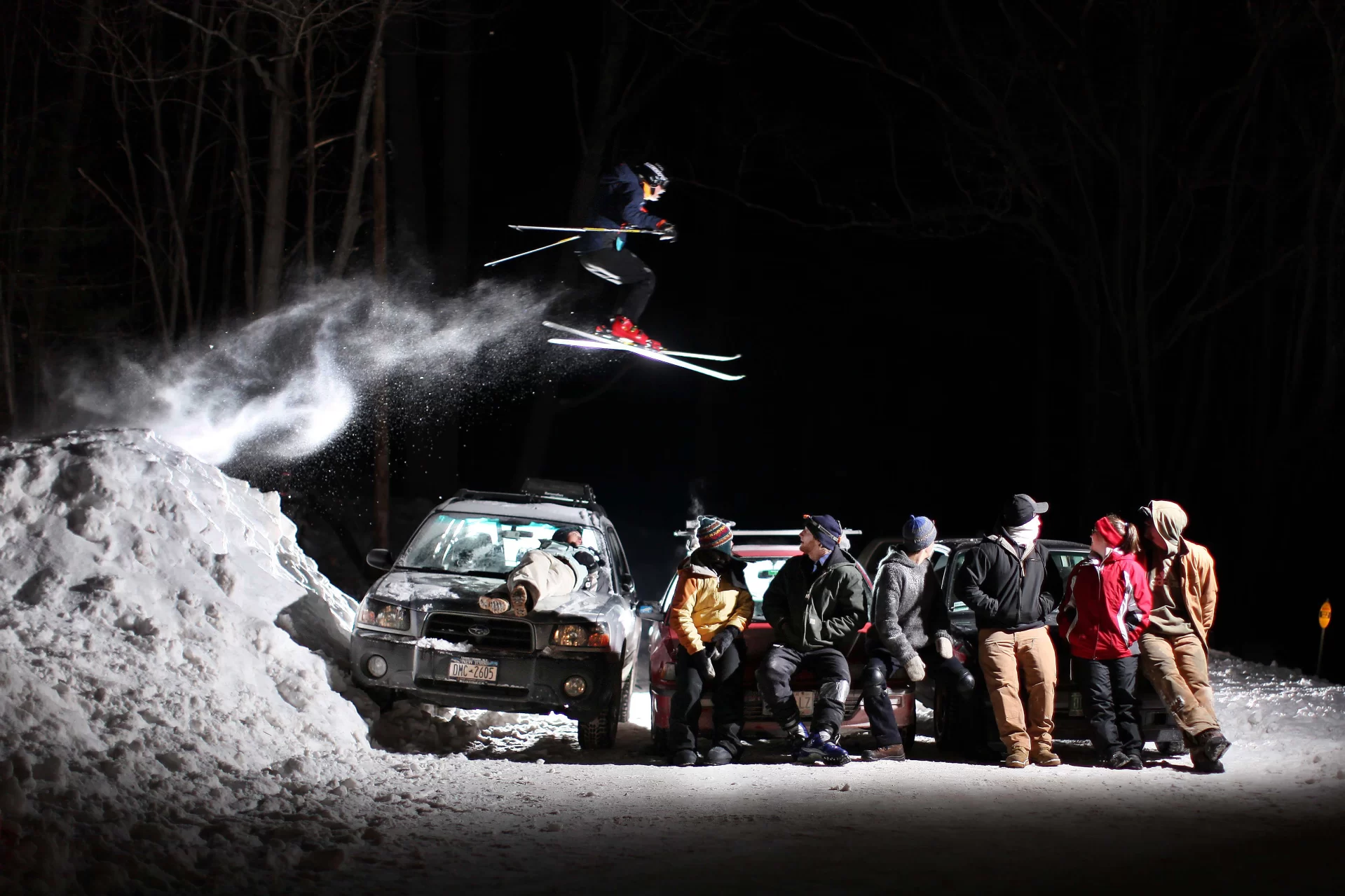
The shoot, on Jan. 19, 2009, was organized by Lincoln Benedict ’09, with lots of help from friends. The idea came from William ‘Dots’ Loopesko ’10 who had created a jump there before.
“We took about 15 jumps before this one to make sure we could clear three cars,” said Benedict, seen jumping the vehicles as Sarah Charley ’11 trips Benedict’s camera and battery-operated strobes.
Toboganning, 1949
Shown tobogganing at an unknown location are, from left, Alexander Somerville ’50, Elaine Harvey ’49, Bill Simpson ’49, Joyce Lyons ’50, and Mary Petro.
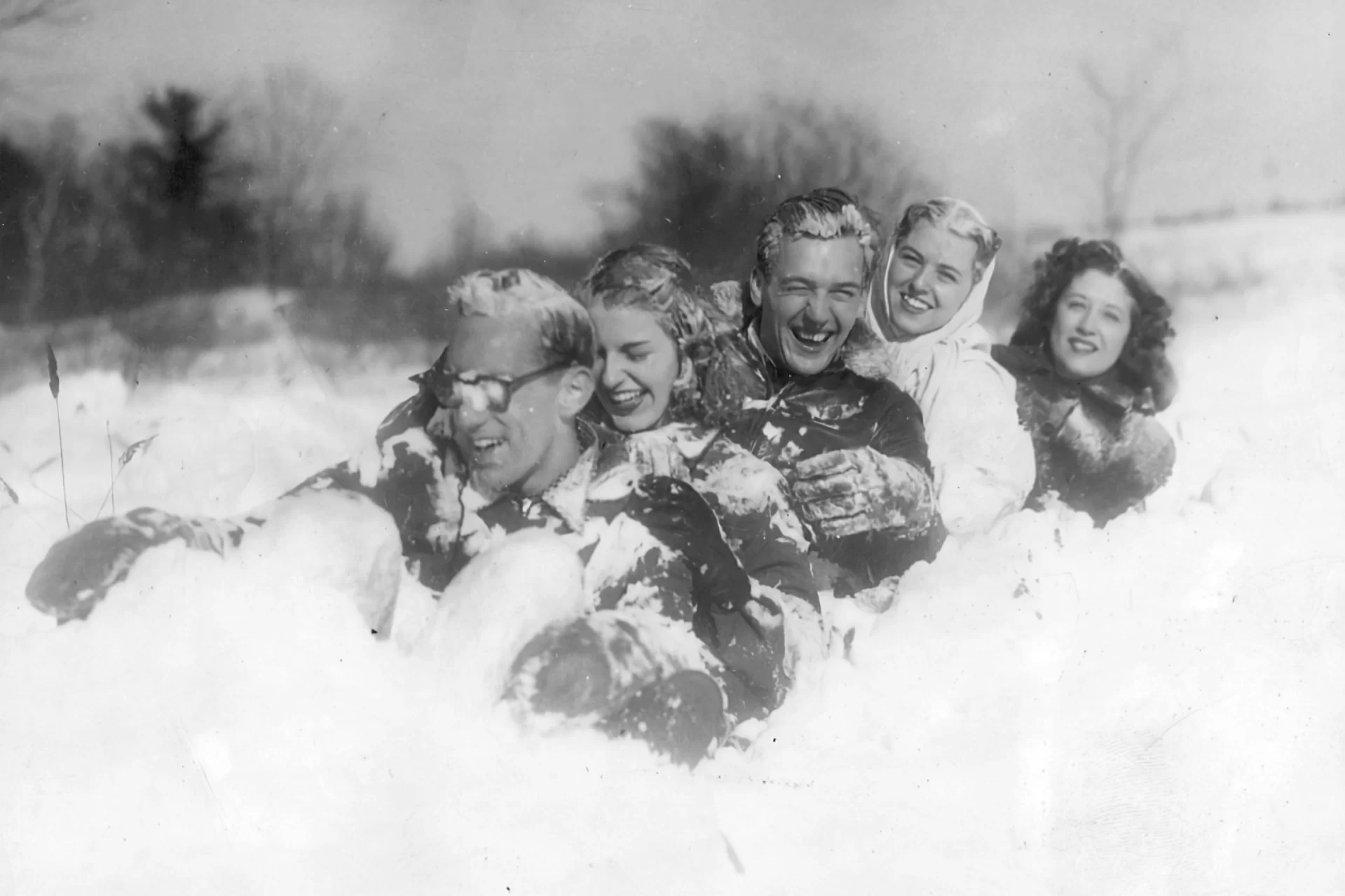
Petro was the wife of basketball coach Edward Petro, and Simpson was one of the coach’s best players. In fact, the forward “is rated as the most outstanding cager to wear a Bates uniform since the time that the college officially adopted the indoor wintertime sport,” reported the Lewiston Evening Journal on the eve of his final Bates game.
In March of that year, Simpson was drafted by the Boston Celtics but opted for a business career.
Lollypop rush, 1936
In the 1930s, the Lollypop Rush — a dash up Mount David by any and all, where the first man and first woman could claim a large lollipop — was on the lips of most students.
The Student reported that the event was modeled after a Worcester Polytechnic Institute event known as the freshman-sophomore “paddle rush.” To us, it seems exhausting.
Tobogganing, 1981
In the 1920s, the Outing Club announced plans to create a toboggan chute down the northeast side of Mount David, across Mountain Avenue and down Benson Street. It’s unclear if that chute was ever built.
But that didn’t stop students from choosing their own route down the hill. This airborne scene is from 1981.
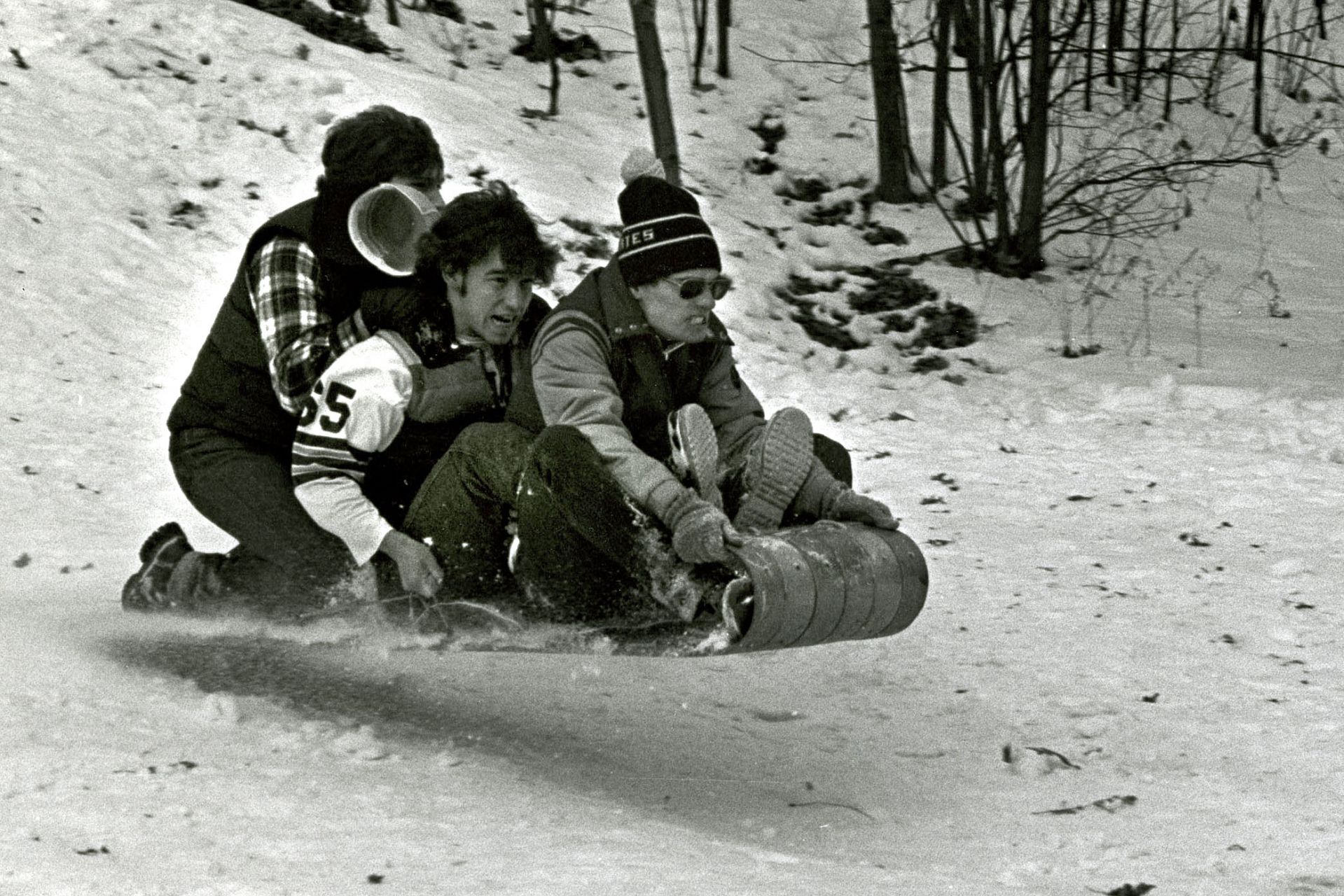
Ski jumping at Mount David, 1939
The late Robert Ireland ’40, a top collegiate skier of his era, takes flight from the campus ski jump in 1939, probably during Winter Carnival. The jump was between the President’s House and Cheney House.
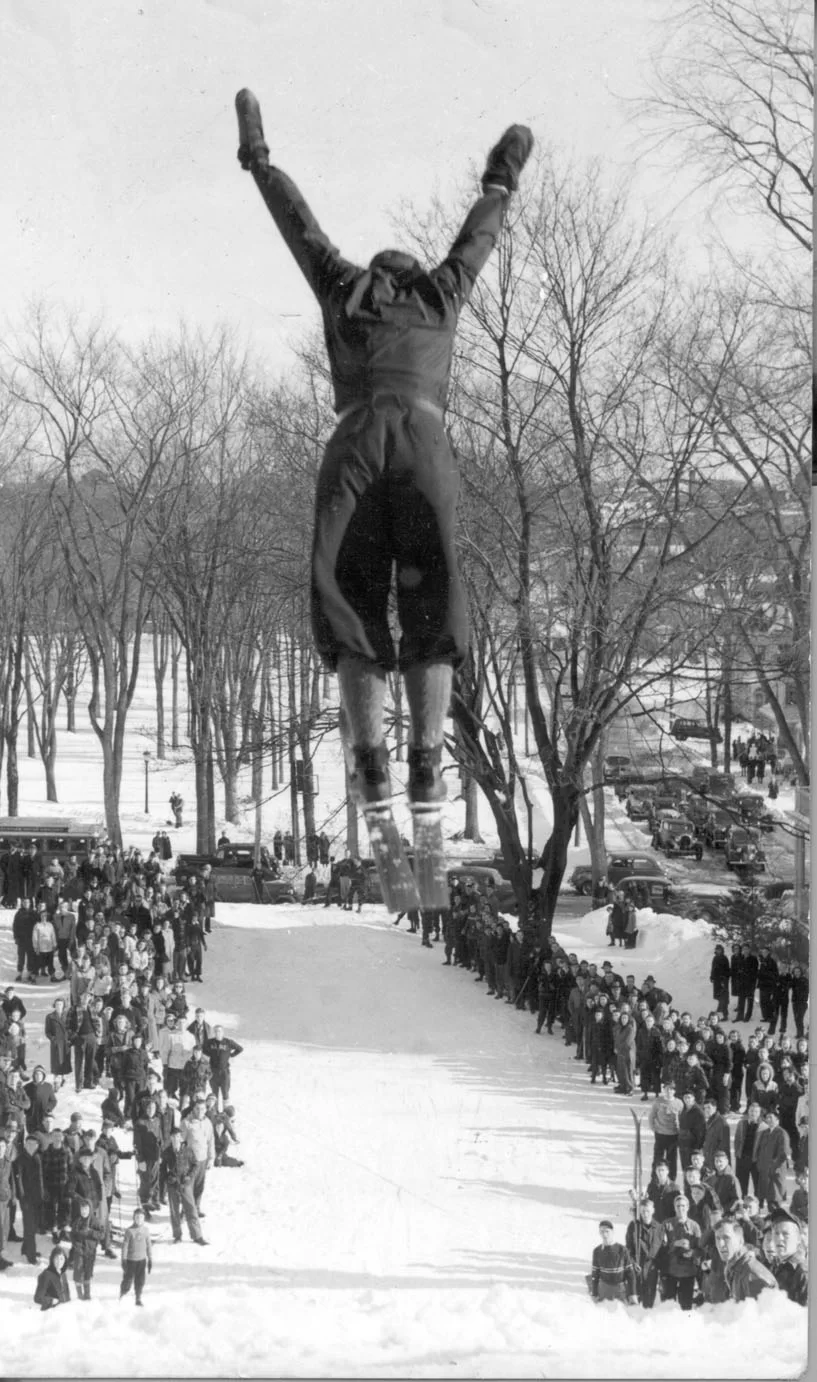
Figure skating ice shows, circa 1947
Figure skating shows were a big part of the Winter Carnival in the mid part of the 1900s.
“At the time, Sonja Henie was in the movies, and many were interested in figure skating,” recalled Birgit Svane Libbey ’49, a performer in Bates ice shows. “Lois [Foster Johnson ’49] would organize a group, pick the music, usually a ballet, and choreograph the show.”
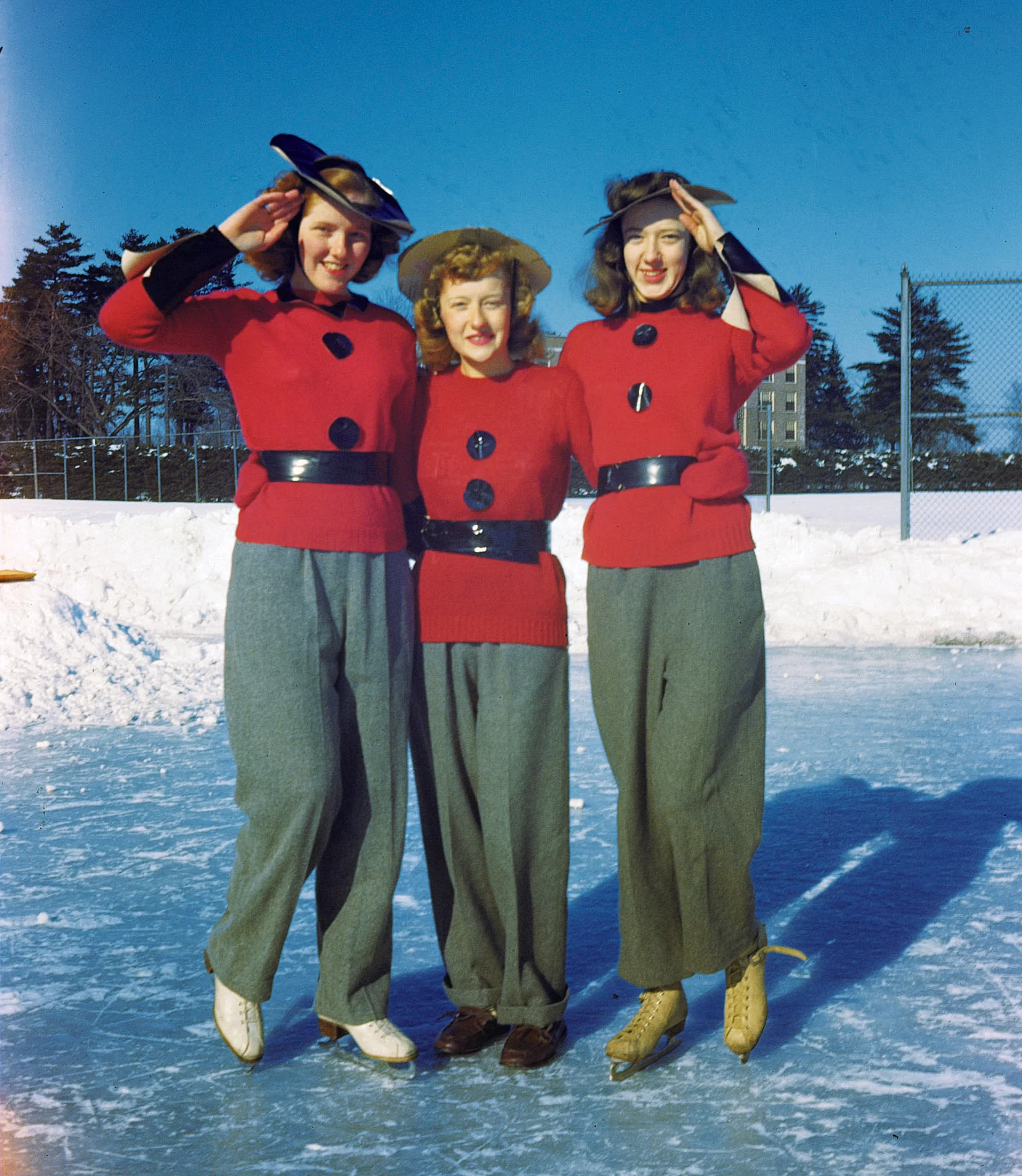
Speedskating, 1936
The rink between Garcelon and Alumni Gym was also the site of raucous speedskating races for men and women.
The first Puddle Jump, 1975
The Puddle Jump tradition has a crystal-clear provenance thanks to its attentive founders, Mark Stevens ’77, Scott Copeland ’78, Chris Callahan ’78, Lars Llorente ’78.
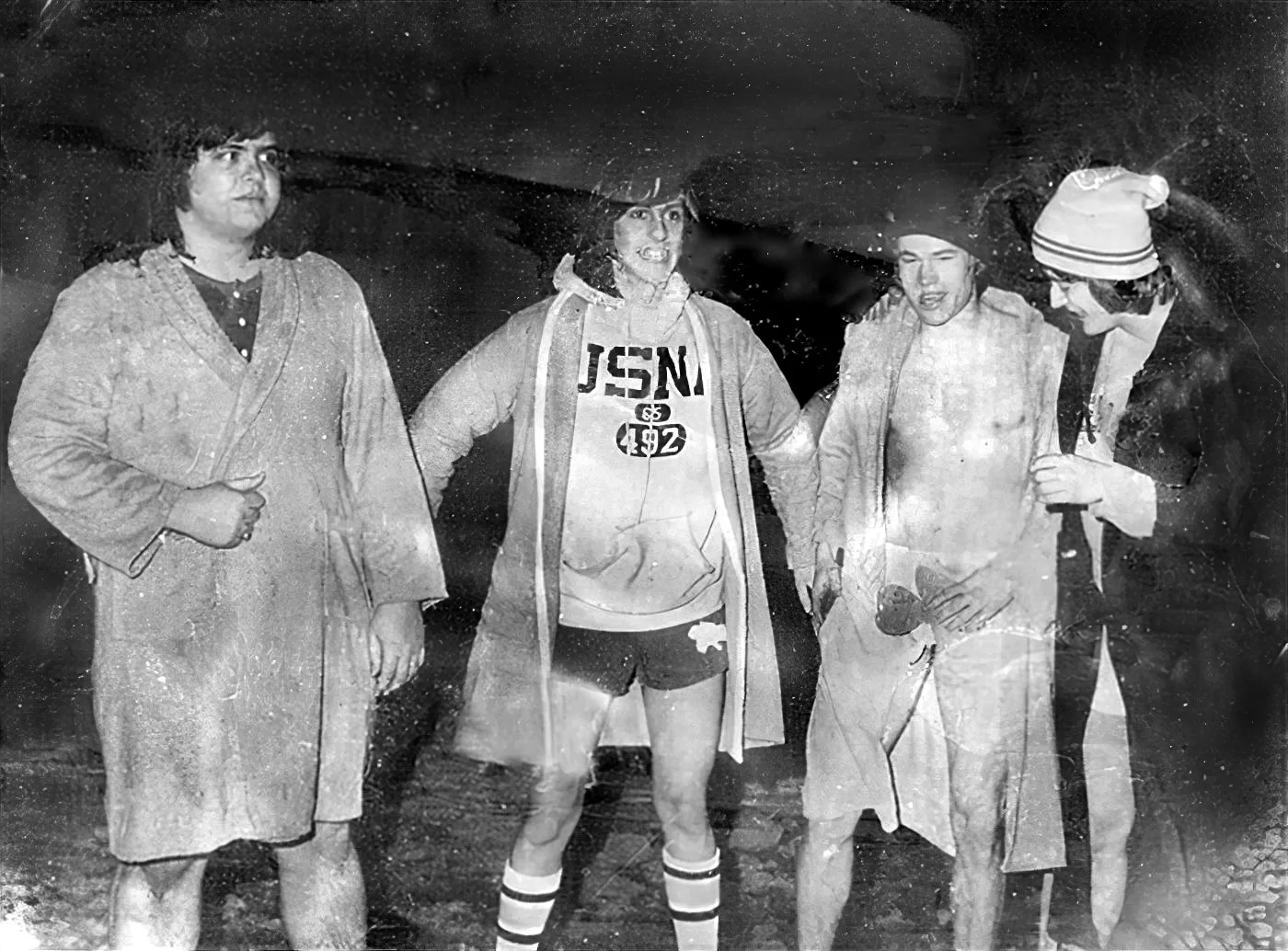
On St. Patrick’s Day in 1975, the four cut a hole in the ice on Lake Andrews and took a bracing dip. It was all about “exuberance at the end of a hard winter,” according to Callahan. Callahan was also influenced by the famous New Year’s Day swim by the L Street Brownies of South Boston’s Irish-Catholic community.
The most recent Puddle Jump, 2023
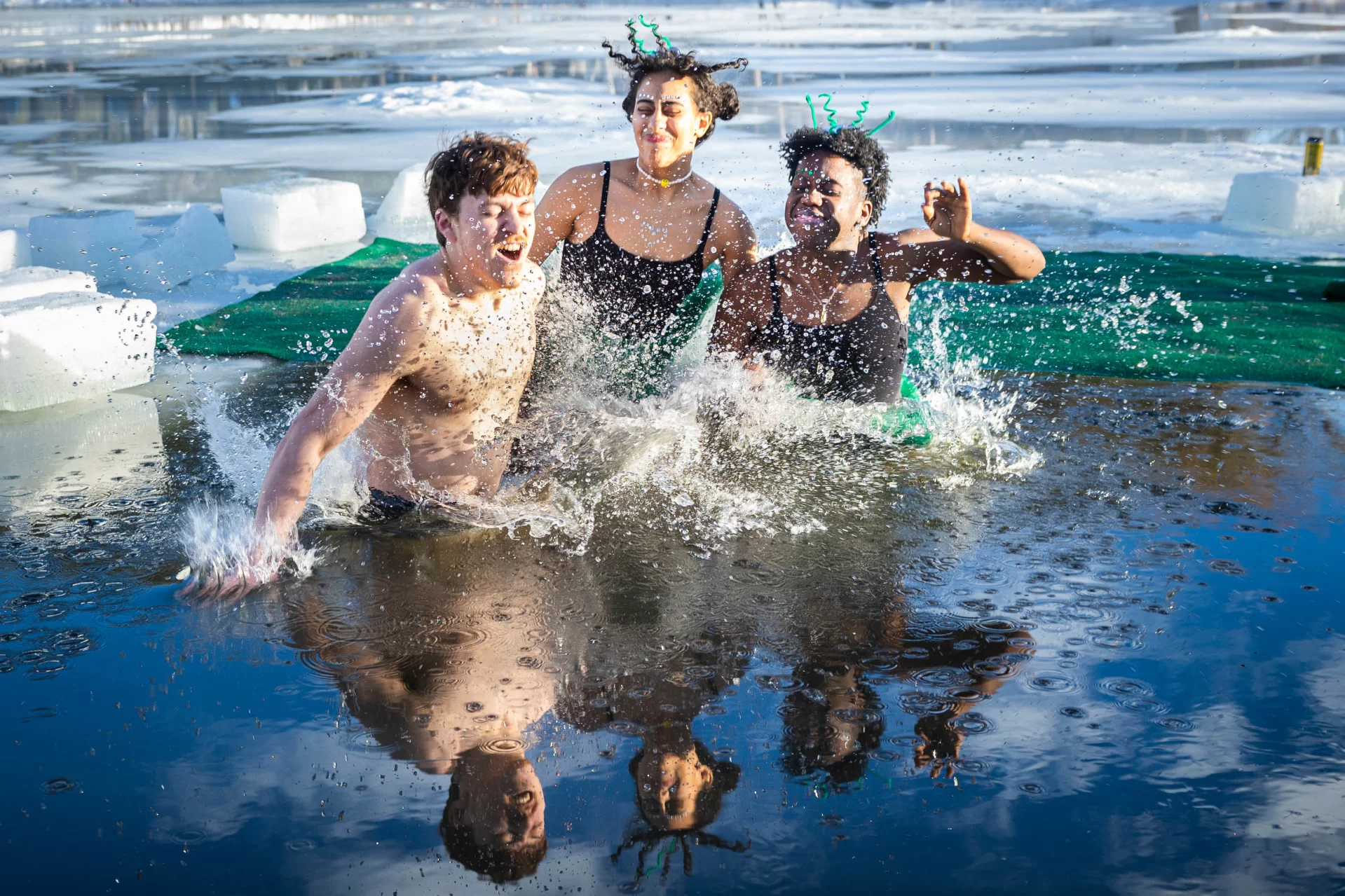
We’ve photographed students at the Puddle Jump in myriad ways, from their trepidatious approach to the hole all the way to their shocked exit. But there’s something about this look, when reality sinks in, that just works.
Winter Carnival torch tradition, since 1958
We like politicians who play with fire.
Over the years, starting with Edmund Muskie ’36 in 1958, Maine governors on both sides of the aisle have been good sports to step outside the State House or their Blaine House residence to be part of a Bates tradition: lighting an Olympic-style torch, which is then run back to Bates, to celebrate Winter Carnival.
The times they are a-changing, 1968 and 1970
The Winter Carnival tradition of crowning a queen was fading away by the early 1970s, but not before a colorful shift in fashion. These two photos are just two years apart, 1968 and 1970, yet are light years apart in terms of cultural change in America.
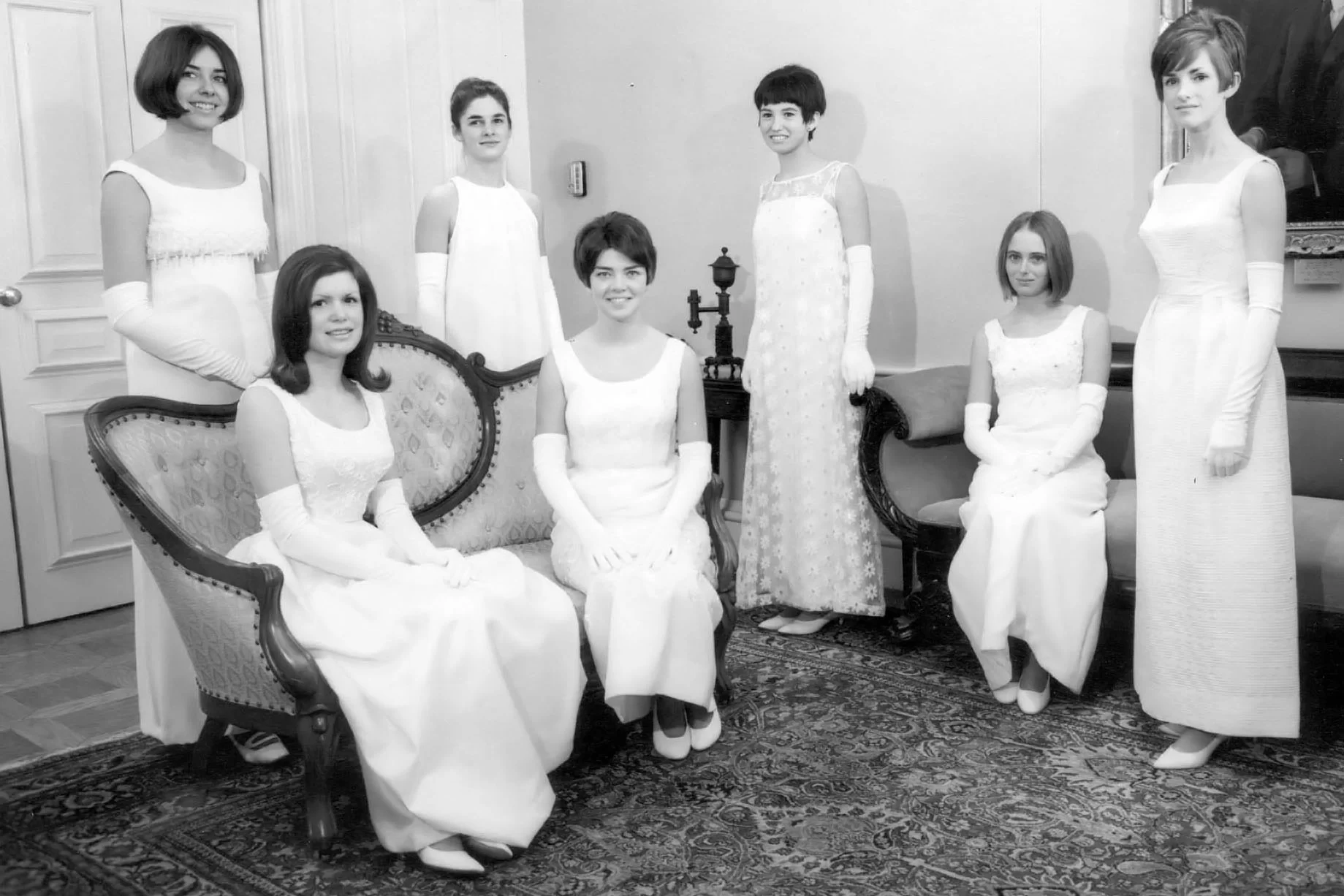
Between the two years was 1969, “considered a seismic shift in some aspects of fashion,” explains B. Christine McDowell, associate professor of theater. What began as the Summer of Love in 1967 culminated with Woodstock in 1969. Hippie fashion was everywhere, as was “lots of media coverage of counterculture looks, which impacted more mainstream fashion in a big way.”
The fashion in the 1968 photo is sleek, she says. Mostly short hair (popularized by Vidal Sassoon and fashion models like Twiggy), empire line dresses (with waists that stop under the bust), and all-white clothes and elbow-length gloves. “You are looking at fashions that are more socially conventional,” says McDowell.
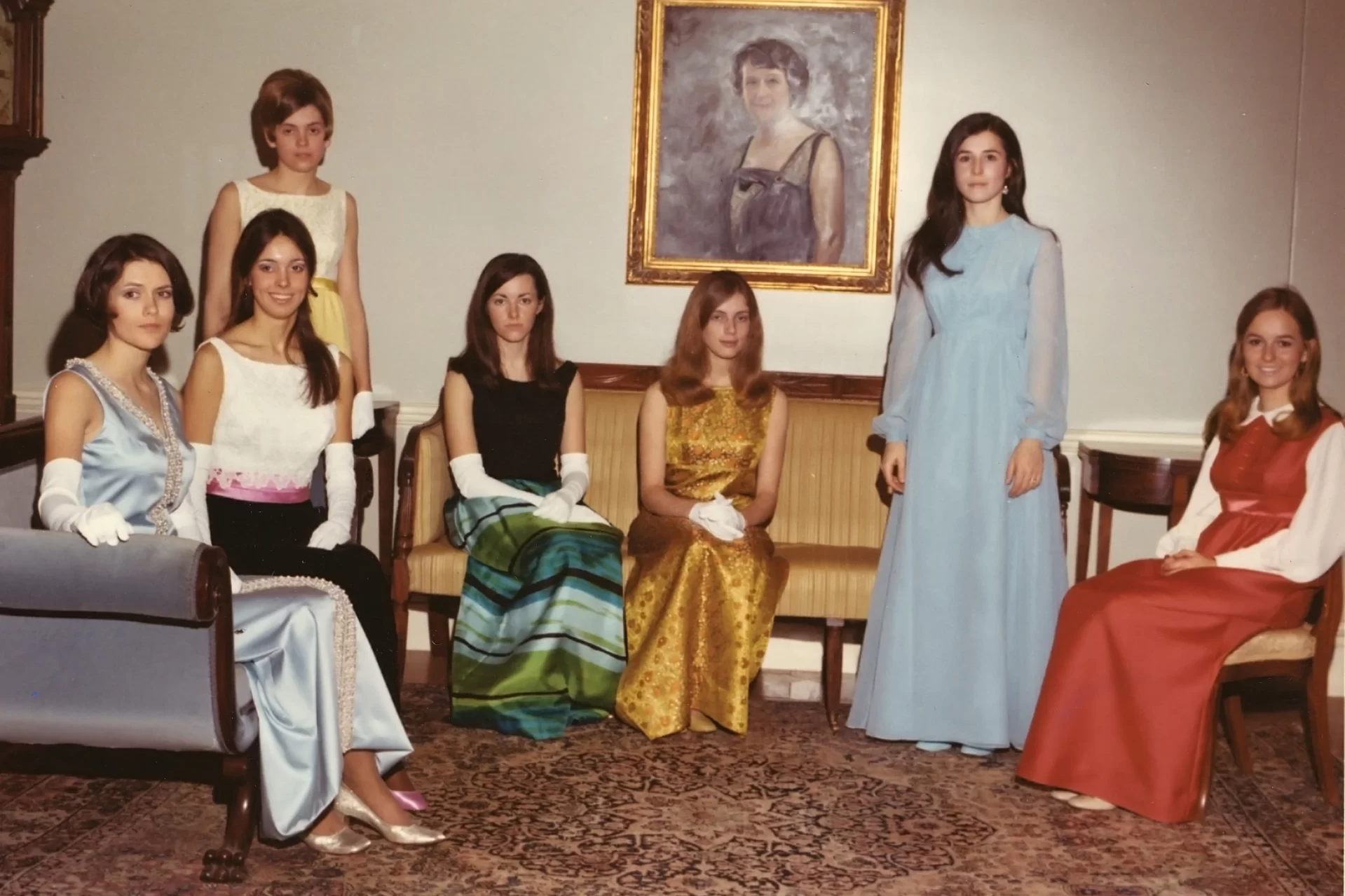
Just two years later, in 1970, the shift is to “looser, longer and less structured hair (simple and flowing).” Gloves have become optional. “There’s sheer fabrics, much brighter patterns and colors, and ‘non-matchy’ sensibility, all tapping into the rise in fashion as a personal statement of independence and self-expression” that marked the era.
Jeep in the Puddle, 1972
This isn’t exactly a fun winter moment, but now, looking back, it’s darn funny.
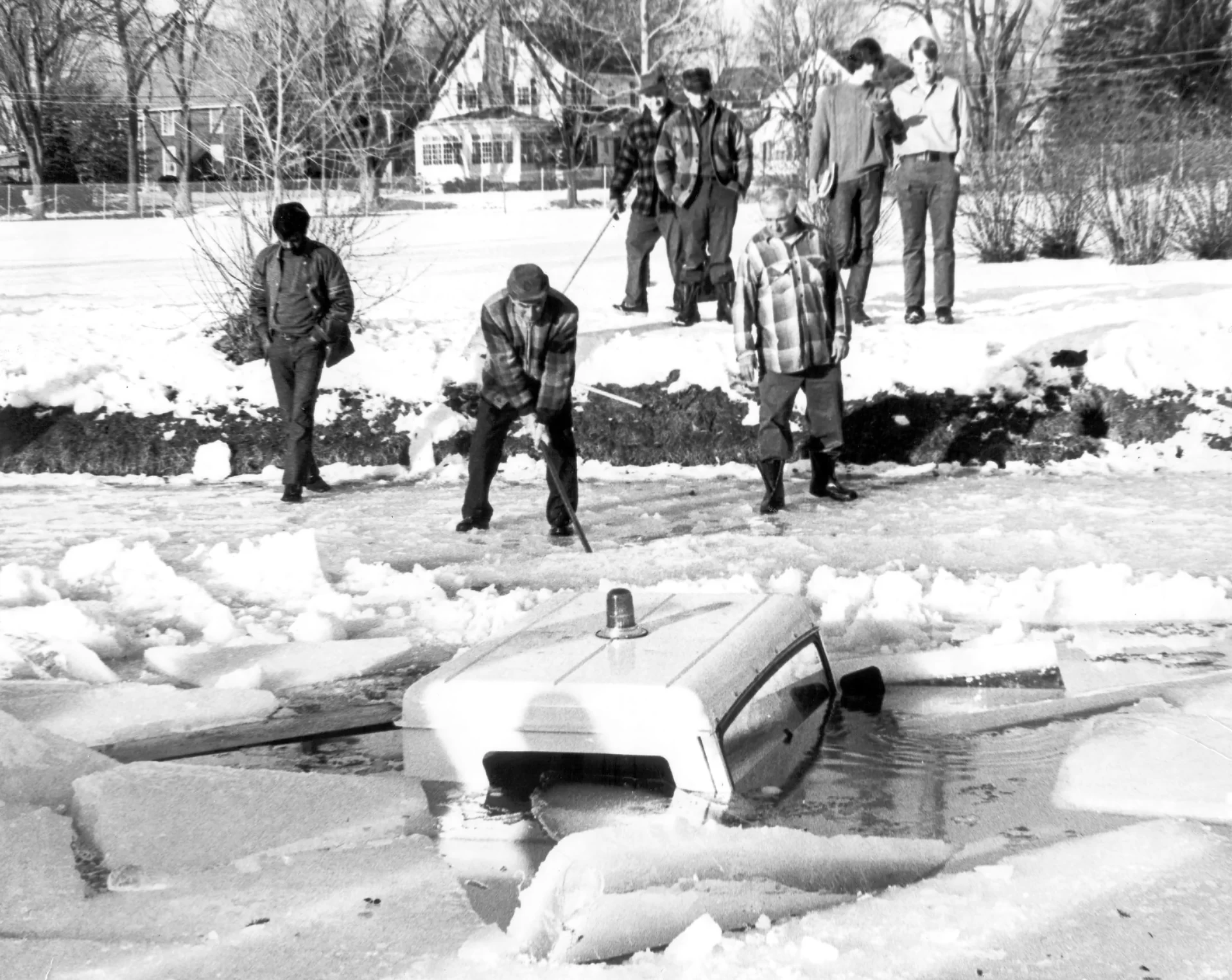
Joe Gromelski ’74 was a sophomore when he took this iconic photograph in December 1971 of the college’s plow jeep mostly submerged in Lake Andrews after it broke through the ice while plowing snow for skating.
On shore and ice are maintenance workers and onlookers in various states of activity and bemusement.
